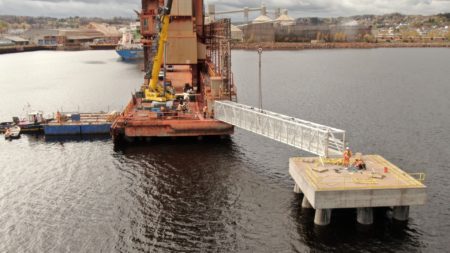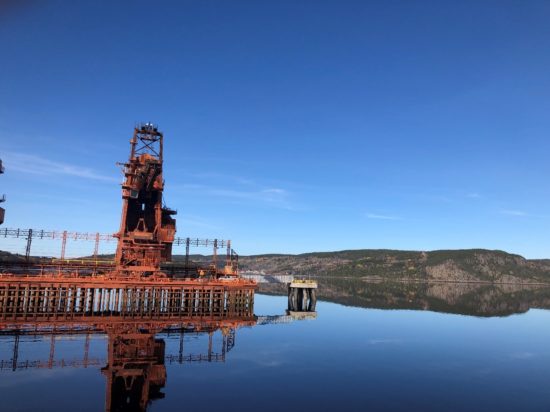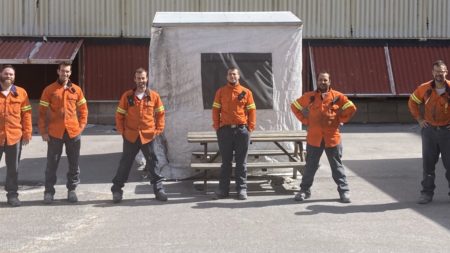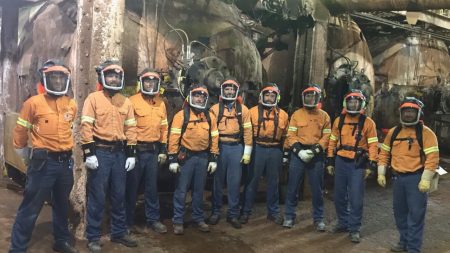New Walkway at the Port Facilities Puts Aluminium in the Spotlight

default
If you pass by Duncan Wharf in La Baie, you will surely notice the new walkway. It leads to the structure known as the dolphin, which was built as part of the project to modernise the wharf and alumina unloading system (MQDA project or Modernisation des quais et du déchargement d’alumine). Aluminium proved to be the material of choice in the construction of this walkway, which in addition to being aesthetically pleasing will remain free of defects as it ages, not least because of aluminium’s great durability.
Nathalie Desmeules, MQDA Project Manager, said, “We reached the first milestone in our MQDA project when the dolphin was installed. This structure, which was added to the tip of Duncan Wharf, makes it possible for vessels to dock in accordance with best practices. As the size of the vessels has changed over the past few years, we needed to find a solution to continue to perform our unloading activities safely and securely and eliminate any risk of collision. The new aluminium walkway bridges the gap between the wharf and the structure so that employees can safely dock the vessels.”
Aluminium takes centre stage
AluQuébec, Quebec’s aluminium industrial cluster, is there for all stakeholders working in the aluminium sector, be they producers, buyers, or users, and is involved in promoting the use of aluminium. One of its priorities is to expand the use of aluminium in infrastructure, including bridges, walkways, and signalling equipment. AluQuébec works with Rio Tinto on several projects and was there to support the team in the design of the walkway project.
This project is a great technological showcase for the use of aluminium in such infrastructure,” said François Racine, President and CEO of AluQuébec. “On a global scale, we are at the forefront of this developing application area. We are working very hard with local players to advance the development and application of aluminium in several areas.”
Aluminium was chosen over steel for its durability and maintenance benefits. Desmeules noted, “The total cost of ownership will be profitable in the long term since the new walkway will require less maintenance and have a longer life span. This structure best fits our needs and will greatly reduce the number of visits required of the maintenance teams, thereby reducing coactivity and health and safety risks.”
For AluQuébec, analyses of the total cost of ownership show that using aluminium in construction projects is profitable. “Over the life of the project, the total cost, which includes purchase, maintenance, and repair, is lower because of the material’s durability,” said Racine. “For example, the very first aluminium bridge built in Arvida is still as good as new, even though it has been in use for 75 years. Comparative life cycle analyses have also shown that aluminium, particularly green aluminium with a low-carbon footprint, adds value in terms of sustainable development and environmental footprint.”
The new walkway has been in use since October, and employees have been very pleased with it. “The employees are very happy and appreciate the new installation. We are getting positive feedback. Some even say that it’s a world-class walkway,” Desmeules said proudly.



